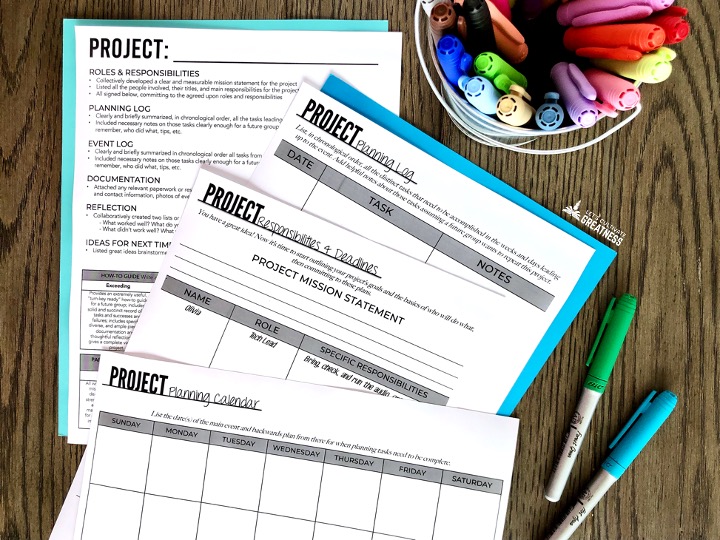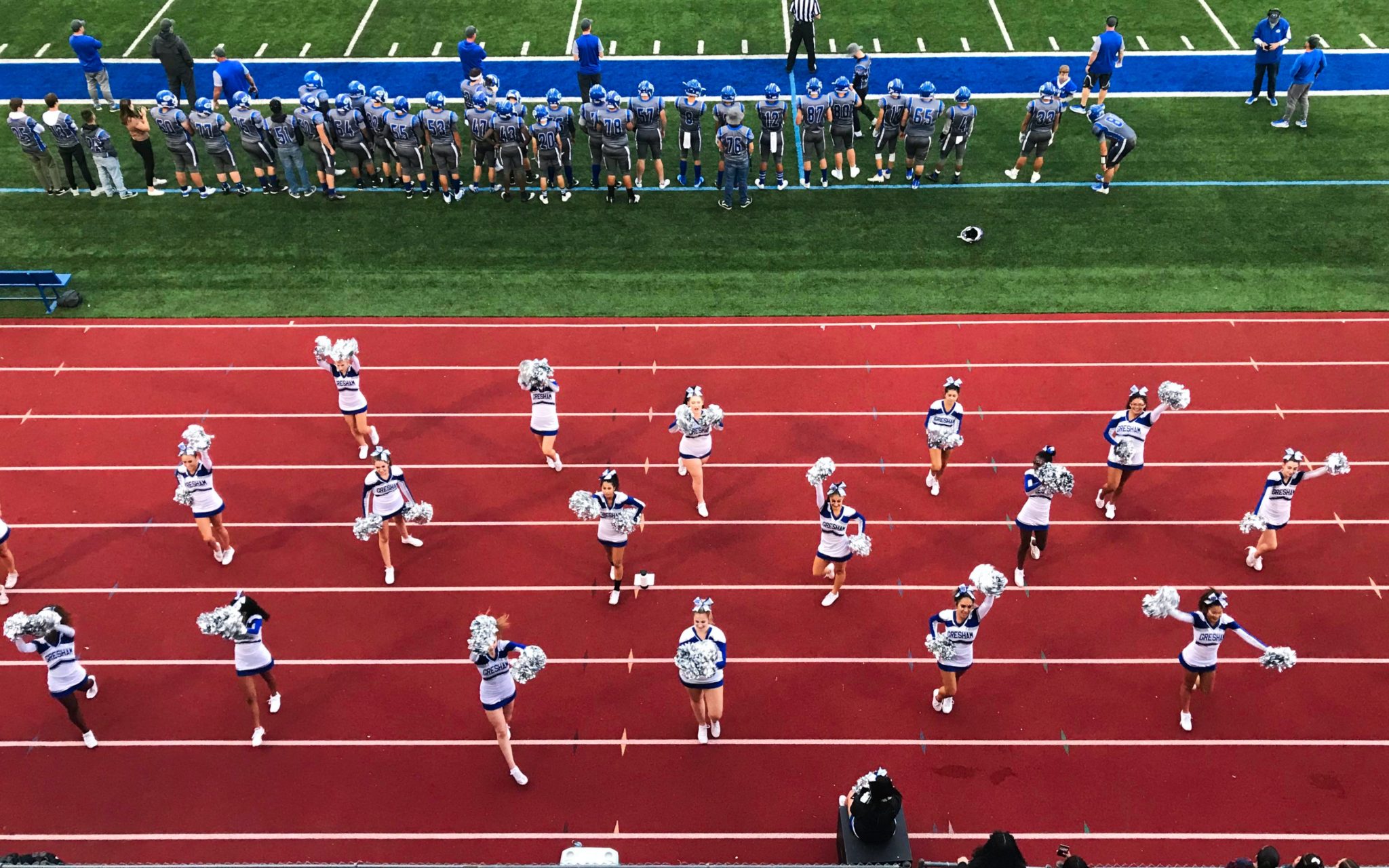Homecoming Week carries a lot of familiar traditions and anticipated experiences that are exciting and fun, no doubt. But unfortunately, there can also be feelings of isolation and anxiety for some of your students.
If the purpose of Homecoming is to cultivate positive school culture, spark pride, and engage alumni and the community, then make this year the one in which you ask your student leaders, “Are we doing that? Really doing that?”
It’s easy to get into “because that’s the way it’s always been done” mode simply because it’s there’s so many sacred traditions involved. Or simply because the week’s so hectic, it’s hard to find the energy to change things up.
Don’t worry, though, this blog post isn’t about canceling the events you’ve always done, it’s about spending a little time beforehand brainstorming and making tweaks. Tweaks that let Homecoming be a positive experience for every student at your school.
Try to think of the new kid without many friends yet, the cross-country team that never has fans come out to watch them, or the quiet kid with over a hundred volunteer hours at the food bank. Homecoming should be about celebrating those students, too, and making them feel just as connected as the officers hosting the events.
If you want to help your Student Council or Leadership group plan and host a more inclusive and positive Homecoming Week, check out the tips and ideas below.
Celebrate All School Activities
Committing to a more inclusive week starts with changing how the date for Homecoming Week is chosen. Instead of picking whichever home football game is most likely to offer an “easy win,” figure out which week when all (or at least as many as possible) athletic teams have home games. That should be your Homecoming Week.
Make a list of all the extra-curricular groups that are active during the fall and have your student leaders brainstorm how they can invite them into the festivities, as well as encouraging attendance at their events. For example, have the music programs host a concert to kick-off the week, or the hip-hop dance club perform their competition routine during the spirit assembly.
Choose Inclusive Dress-Up & Class Themes
This is one is big. Not just “important” big, but “a lot to talk about” big. I have a whole blog post dedicated to this where I explain how several very common dress-up themes are not inclusive and offer ideas for better themes. A few to rethink include Twin Day, Hawaiian Day, and Crazy Hat Day.
Dressing up is usually something your student leaders look forward to, but participation school-wide often isn’t very high. If this is true at your school, then it may be time for some reflection prior to deciding this year’s daily themes.
Are the themes easy to do? Are they no-cost or inexpensive? Are examples provided? Do they allow everyone to participate? Are they respectful of all genders, ethnic groups and nationalities, abilities, and groups?
Many popular themes aren’t. But the great news is that it’s usually super easy to fix them. And it often makes for an even more fun experience.
For example, swap Twin Day, which can be so isolating and exclusive, with a class competition theme, where each grade has a different theme. That way no one is left out and classmates are motivated to help costume each other. We do a Class Colors Day and I keep tubs of clothes and accessories in the four colors for students to borrow.
Similarly, make sure your overall Homecoming Week theme is respectful, positive, and lends itself to subthemes that allow each grade to easily participate. Check out my blog post where I list 30 Homecoming Week theme ideas that meet these criteria.
Involve Everyone in Assembly Games
Just like with dress-up themes, simple choices can make a big impact on involving every student, not just spotlighting the already-involved kids, in your spirit assembly.
First, as hosts, your student leaders should be lining the entrance, high-fiving and greeting every student and staff member who walks in. This sets a high-energy tone and ensures every person is seen and welcomed.
Second, for games that involve a few kids from each class, have your student leaders follow rules to ensure more equal participation. We pre-select and confirm players so there’s no in-the-moment selecting from the bleachers. This ensures the same kids aren’t picked over and over. Certainly, some games could still call for spontaneous participants from the audience, but this practice inadvertently excludes some students. So, try not to solely rely on it.
At the start of the year, we fill a separate zipper bag for each class with students’ names. This idea came from one of my students, and, I swear, my heart grew three sizes when she explained why she needed 4 gallon-sized bags. Once a kid has participated, their name is removed from the bag. Ask your school secretary to print class lists to cut up.
We like to host games that can involve up to a dozen or so from each grade, so we go through a lot of names. Games like these allow more than just a few students to join in on the fun.
Third, include games that allow students to participate from their seats in the stands. Not just as part of “the wave” or cheering, but as truly part of the game.
For example, posing trivia questions where all members of a class must shout out “True!” or “False!” Another game we do is called Reverse Charades. This is where the whole class acts out the word and a single student down in front must guess what their classmates are doing.
If spirit assemblies are meant to be the pinnacle of rallying students and creating positive energy, then have your student leaders take an honest look at how well past assemblies have done that and brainstorm new ideas.
I gathered up 48 inclusive game ideas into a handy flip deck to help ensure all your assemblies, not just Homecoming, are inviting, positive events.
Brainstorm Participation Solutions
Ask your student leaders how they can encourage greater participation in the week’s events. Could they coordinate a carpool for students to attend the volleyball game? Hold practice for the class skit on the weekend if afternoon sports practices mean too few can be involved?
Or maybe this means creating a dress/suit closet where students can donate their dresses, suits, shoes, and any other one-time-worn formalwear.
For my school, it means that we make sure one event, our Activity Night, a field day-type evening event, is free to attend. We ask for canned food donations, and many do bring some, but all students are enthusiastically invited.
There can be all sorts of barriers for students to participate, so don’t rush your student leaders in brainstorming what they might be and helping them find solutions.
Incorporate a Service Project
This is a great way to really make Homecoming Week more than just a self-absorbed social event. Projects can be as simple as serving dinner at the local homeless shelter one evening, hosting a week-long canned food drive, rolling around a coffee and treats cart to teachers one morning, or cleaning up the landscaping around the school one afternoon. The possibilities are endless.
Simple ask your student leaders how they’d like to give back or pay it forward to the school and community for all they do for them.
Not only are there many options for the actual project itself, but also in how it could be conducted. It could be counted as one of the events in your class competitions, it could be simply open for students to sign up and join, or it could be a special project just for your Student Council officers or Leadership students.
We use this universal project planning kit for all our projects, service project included. The ready-made forms and templates let your students plan and conduct a successful service project themselves.
Include & Appreciate Alumni & Community
There are many options you can do depending on your community. If a lot of alumni are local, encourage them (and all community members!) to attend events throughout the week. Create posters to hang in business windows with the calendar of events. Ask the local newspaper or radio station if they could make announcements. Post event information on your school’s social media accounts and reader board.
Have your student leaders create special ribbons or buttons for alumni to wear when they attend these events. Then at some point during the event, recognize them with a round of applause.
Consider honoring certain alumni. You could read the names of all those who are serving in the military at halftime or create a bulletin board of those doing great things in their adult lives. Or have your student leaders send these alumni thank you or “we’re proud of you” letters.
Likewise, you could create and send thank you cards or posters to local business for supporting the school and its extra-curricular programs.
Change Up Your Royalty
Lastly, your Homecoming Royalty traditions. This is perhaps the most problematic tradition, but also one of the most “but we’ve always done it,” which can make it hard to open for revision.
While some colleges and high schools have done away with the gendered “King” and “Queen” titles to be more gender-inclusive, there are other reasons to look at how your school can make its Royalty more inclusive to all students.
Most simply, ask the question, “What are we celebrating by electing people in this way?” Often, students, and even us as the adults, forget to realize that there may be no or very vague criteria in the selection process.
Also, consider the school’s culture around having a royalty court. Does it create unhealthy competition, hurt feelings, and unequal opportunity for recognition? At a previous school I worked out, I recall girls campaigning not to get nominated for an underclass title to remain eligible for the senior Queen position. Even though none of the titles meant anything in the big scheme of things!
Imagine the difference if it became an award recognizing the best Wildcat or Eagle (or whatever your mascot is!) and the criteria became who exemplifies the traits your school promotes, like integrity, hard work, or kindness. Students nominate and vote, with the top two winning (regardless of gender or grade) and the next few in the voting count could be the runner-ups. Crowns, sashes, flowers, waving from the fire truck at the parade—all that could still happen if you wanted. But now your school is recognizing that quiet kid with all the volunteer hours, or the impressive-attention-to-detail basketball team stats manager, not just the students often already at the center of everything.
Hopefully the tips here have given you fresh ideas for hosting an even better Homecoming Week. One in which every student feels welcomed and able to participate. If you want this year’s Homecoming week to not only be more inclusive, but more organized and less stressful too,, then you’ll want to download my universal Project Planning Kit. This is a collection of the brainstorming, planning, and reflection forms and templates that allow students to really shine in leading anything from spirit assemblies and dress-up days to the Homecoming parade and dance.

Feature image credit: Rajiv Perera








